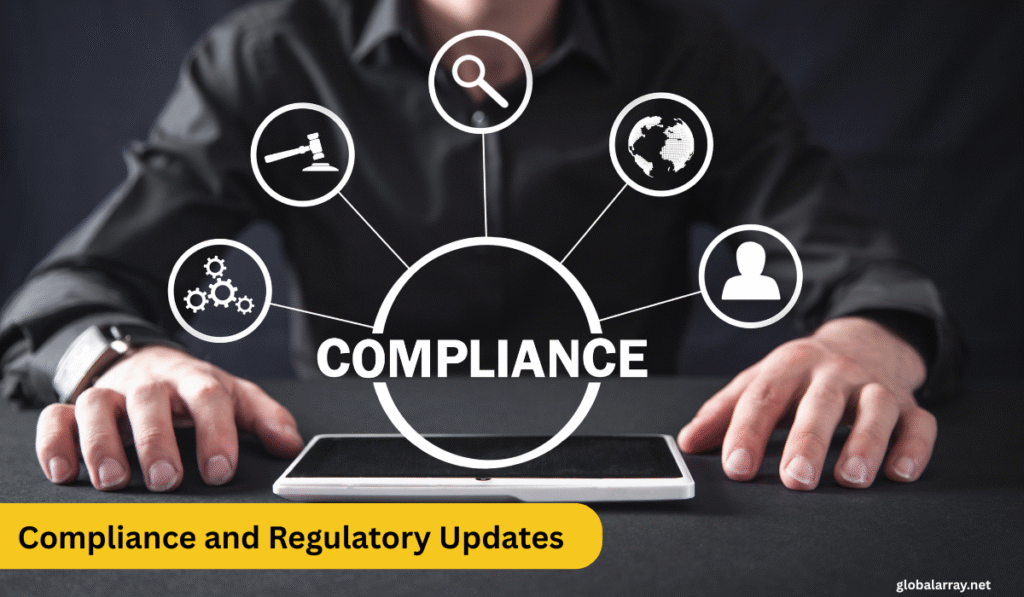New Features and Improvements in Version 10.0.11
In the 10-0-11 update of Dynamics 365 Finance, important improvements have been made related to budget, tax, and localization. For example, in the Italian market, new options help manage the plafond system better, making tax planning easier for businesses. Some old features were removed or replaced to simplify tasks and provide a clearer plan for financial operations. These changes show an extended effort to meet local needs and give more flexibility in handling finances.
This update also includes platform enhancements like bug fixes and service improvements that improve the lifecycle of Finance and operations apps. Users can confidently use the updated version with the latest KB fixes available through LCS. The platform now stays up-to-date with Dynamics 365, giving smoother updates and reliable information to help users work efficiently with Finance 365 features.
Functional Updates
The functional updates in Dynamics 365 Finance 10-0-11 bring many improvements to help with daily work. This part shows new features and tools that make reporting more accurate and workflows more efficient. With better automation and optimized processes at the core of the application, users get a smoother experience. These updates improve important capabilities so that daily tasks are easier and faster to complete.
User Experience Improvements
In the 10-0-11 update, Dynamics 365 Finance makes the user experience much better. The interface is more intuitive and updated to help users work faster and more comfortably. You can now customize your settings and find your way around the system more easily with improved navigation and clear dashboards. These changes make using the app feel smoother and less confusing.
These small but important improvements in the UI help users get their work done with less effort. From what I’ve seen, when an app works smoothly and feels easy to use, it helps people finish tasks quickly and with less stress. This update focuses on making your workday simpler and more efficient.
Platform Enhancements: Bug Fixes and Service Improvements
The 10.0.11 update from Microsoft for Dynamics 365 Finance and Operations includes many important bug fixes and platform improvements. These changes help make the software more stable and faster. Before this update, users sometimes faced errors or slow performance during their work. Now, the update reduces these problems by fixing issues and improving how the system runs every day.
This update also ensures the apps work without interruptions. It focuses on many parts of the system to increase reliability and keep the software up to date. From my experience, the update makes it easier and smoother for users to do their financial tasks with less stress and fewer technical problems.
Bug Fixes and Performance Enhancements
In this update, many important bug fixes have been made to improve how the system works. Based on my own use, things run more smoothly now, especially in reporting and daily tasks. The update comes with detailed information in the official article, and the full list of changes is easy to view in the related KB notes. These improvements are part of the system’s Lifecycle and are included in the latest LCS release. Once applied, users will notice better speed and fewer problems.
Also Read: Who Owns IP? The Truth Behind Your Digital Identity and IP Address Ownership
Compliance and Regulatory Updates in Dynamics 365 Finance
In the latest Dynamics 365 Finance 10-0-11 update, Microsoft has added new tools that make it easier for businesses to handle legal and regulatory requirements across different regions and locations. The system now supports tax rules and standards better, allowing users to manage their reporting tasks with confidence. From my experience, having clear ways to monitor and stay updated on changes helps companies reduce risks and avoid compliance issues before they happen.
This update provides businesses a smarter way to follow laws and regulations specific to their market, making daily compliance simpler. By helping users prepare in advance through timely updates, Dynamics 365 Finance creates a more organized and secure financial environment. This support not only ensures compliance but also lets teams focus more on important tasks instead of worrying about legal problems.
Compliance and Regulatory Updates

In the 10-0-11 update of Dynamics 365 Finance, Microsoft added several regulatory improvements to support legal rules in different country/region setups. Now, businesses can easily view and manage each issue that comes under local compliance. The update makes it easy to sign in to LCS and learn about the latest updates using helpful tools built into the system.
This release also makes it better to search for regulatory changes across different apps and business types. Whether you are in finance or managing daily operations, the update helps you stay informed in a clear way. The system lets you see what’s planned for the future and gives access to more useful information for your Dynamics 365 setup. This makes following the rules easier no matter what type of business you run.
Deprecated and Removed Features
In version 10-0-11 of Dynamics 365 Finance, some old features have been removed or deprecated. These changes were announced earlier to give users time to prepare. The update helps reduce breaking issues by cleaning up tools that are no longer useful or compatible with the system. This is common in product updates to keep things running smoothly in both sandbox and live environments.
Microsoft’s notice explains that this removal was needed to improve development workflows and avoid errors in binary or compiler tasks. Some features were made inactive after being flagged months before in a public announcement. From my own experience, checking the list of deprecated tools in each article really helps plan better. These deprecations may not affect every user, but they do play a big role in shaping how teams work in Dynamics 365 Finance.
Future Feature Roadmap and Upcoming Changes
The future feature roadmap for Dynamics 365 Finance gives users and developers a clear idea of the upcoming updates and changes planned by Microsoft. This roadmap helps businesses stay ahead by allowing them time to prepare and align their financial and operational strategies with newer features and enhanced capabilities. It’s designed to make transitions smooth and to increase automation, making daily workflows simpler and more efficient.
This section also explains that some older tools will soon be replaced or phased out to keep the software fresh and reliable. These changes provide businesses with better tools and improved performance, helping them take full advantage of the latest releases. From my experience, having this kind of insight helps both users and developers avoid surprises and ensures a smoother path forward with Dynamics 365 Finance.
Future Feature Roadmap Links
In version 10-0-11 of Dynamics 365 Finance, some old features have been removed or deprecated. These changes were announced earlier to give users time to prepare. The update helps reduce breaking issues by cleaning up tools that are no longer useful or compatible with the system. This is common in product updates to keep things running smoothly in both sandbox and live environments.
Microsoft’s notice explains that this removal was needed to improve development workflows and avoid errors in binary or compiler tasks. Some features were made inactive after being flagged months before in a public announcement. From my own experience, checking the list of deprecated tools in each article really helps plan better. These deprecations may not affect every user, but they do play a big role in shaping how teams work in Dynamics 365 Finance.
Also Read: 192.168.11.1 Router Login, IP Guide & Troubleshooting
Conclusion
The 10-0-11 update from Microsoft helps keep Dynamics Finance clean and working well by removing old and deprecated features. This makes the system faster and easier to use. From my experience, reviewing these notices before updates helps in better planning and avoids problems in day-to-day development and work.This update also makes future upgrades easier and smoother. It’s an important step that helps businesses stay up to date and run their finance processes more efficiently. Staying informed about these changes helps keep the system stable and ready for the future.
FAQS
What does 10.0.0.1 mean?
The IP address 10.0.0.1 is a private IP commonly used as the default gateway address for many home and business routers. This means it serves as the main access point for devices on a local network to communicate with the router and access the internet. Since it is a private IP, it cannot be accessed from outside the local network, providing a layer of security.
What is the 192.168.1.1 password for TP-Link?
The default password for accessing a TP-Link router’s admin panel at the IP address 192.168.1.1 is often set to “admin”. However, this password can vary depending on the router model or may have been changed by the user during setup. If you don’t remember the password, you might need to reset the router to factory settings.
What is 10.0.0.1 in Chrome?
When you enter 10.0.0.1 into Chrome’s address bar, it attempts to open the router’s login page, assuming the router uses this IP address as its gateway. This page allows you to manage router settings such as network security, passwords, and device connections. You must be connected to the router’s network to access this page.
What does an IP address of 10.0.0.0 mean?
The IP address 10.0.0.0 is part of a large block of private IP addresses used internally within private networks. It represents the network itself rather than a specific device. Devices within the 10.0.0.x range can communicate with each other but are not reachable from the internet, helping keep internal networks secure.
What is the Wi-Fi admin password?
The Wi-Fi admin password is the key used to protect access to your router’s administrative settings. This password controls who can change your Wi-Fi settings, including network name, passwords, and security options. It’s different from the Wi-Fi network password, which allows devices to connect to the internet through your router.
How to do port forwarding?
To do port forwarding, you first log into your router’s admin panel, usually by typing its IP address (like 192.168.1.1 or 10.0.0.1) into a browser. Then, find the port forwarding section and add rules specifying which ports should be open and forwarded to specific devices on your network. This helps certain apps or games connect to the internet properly.
How to check Wi-Fi password?
You can check your Wi-Fi password on a device already connected to the network by looking in the network settings. On Windows, for example, you can find saved passwords in the Wi-Fi properties. Alternatively, you can log into your router’s admin page and view or change the Wi-Fi password from there.
What is TP-Link Wi-Fi password?
The TP-Link Wi-Fi password is the password set to allow devices to connect to your TP-Link router’s wireless network. It can be found on the router’s label if you haven’t changed it, or you can set a new one by logging into the router’s settings page. This password is essential for securing your wireless network from unauthorized access





